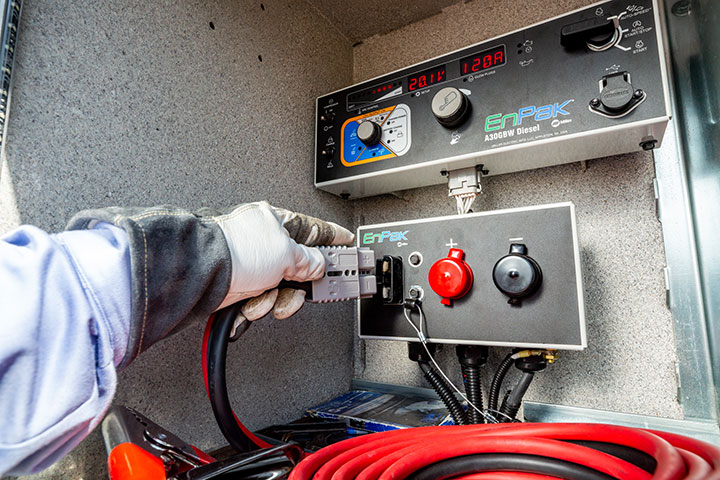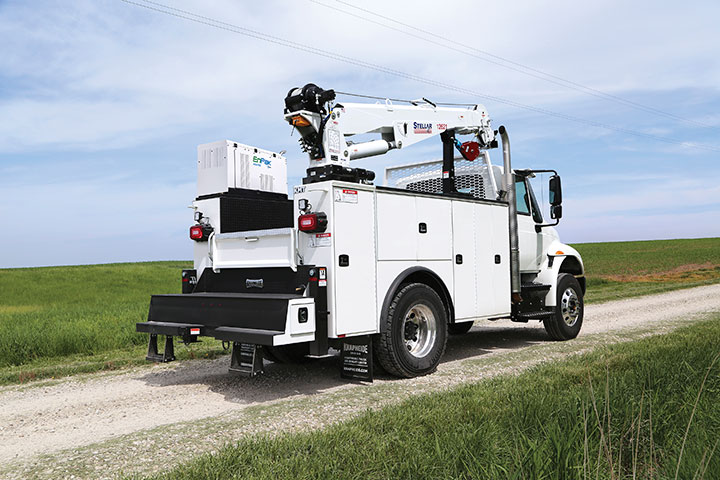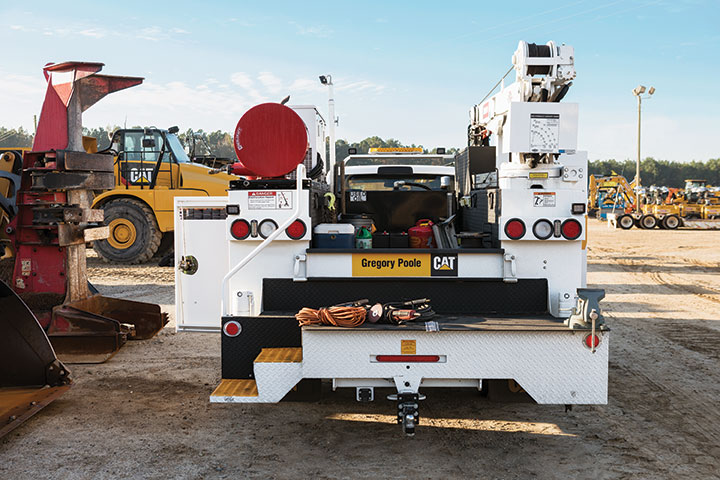Service tech safety
Service tech’s safety, job satisfaction and productivity are among the top priorities for most fleet managers. In order to achieve these goals, you need to start by specifying a truck with the right accessories and equipment.
The choices you make when specifying the layout and design of a work truck will directly impact productivity and access, as well as technician well-being. Before your next service truck order, think about flexible equipment placement on the truck, adding steps and lights for safety, and building in remote access to tools and equipment.
See how work truck ergonomics and equipment design can improve service techs’ comfort and ultimately job satisfaction:
1: Reduce climbing in and out of the truck

For many truck fleets, one issue affecting tech comfort is the repetition of climbing in and out of the truck to get tools or change equipment settings. The more times a tech has to climb in and out of the truck, the longer it takes to complete a job, and the more chances there are for strain or injury. Choosing the right equipment and accessories that promote easy access helps reduce the risk of injury in addition to helping boost efficiency. Look for equipment that offers remote access or point-of-use controls, so techs can spend less time walking back and forth or climbing in and out of the truck.
2: Easier access to equipment and accessories

Thoughtful truck and chassis design take into account a technician’s day-to-day work to promote ease of access and ergonomics. Well-placed handrails and steps on the back of the truck improve safety and security when techs must climb in and out. Adequate lighting and non-slip surface coverings are smart add-ons that promote a better environment when techs are working in the dark or in rainy or icy conditions. There are many different designs and options available for these features, so it’s easy to choose one that bests fits your truck and technician needs. In addition, mounting equipment such as welder/generators or auxiliary power units lower on the truck so the controls are accessible from the ground also results in better access and reduced tech strain.
3: Less clutter on the truck and jobsite

A messy truck increases the risk of slips, trips and falls, while an organized truck delivers advantages for efficiency. When techs can easily find the tools they need, they’re less stressed and can complete jobs faster. Look for opportunities to consolidate equipment in your truck fleet by choosing a tool that can do the job of many. For example, a welder/generator with additional capabilities like compressed air, battery charge and even hydraulics helps reduce unnecessary equipment. This frees up payload space and reduces clutter while still ensuring space for the tools that techs need to get jobs done. Also, there are many design options for cabinets and shelves on a truck to help techs organize their tools and keep the truck tidy.